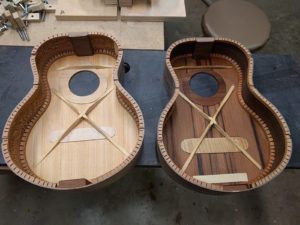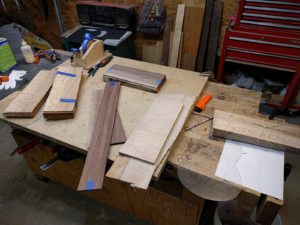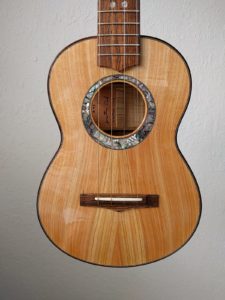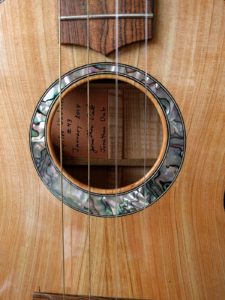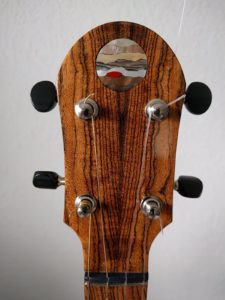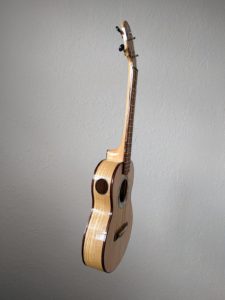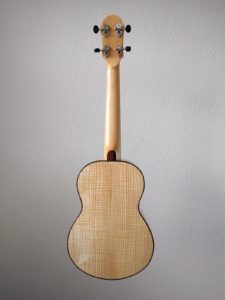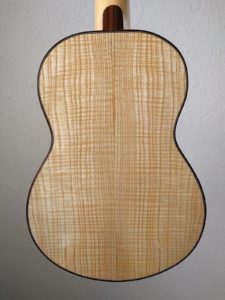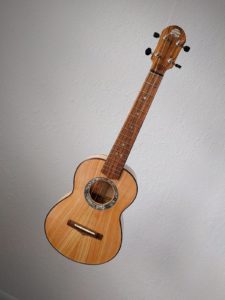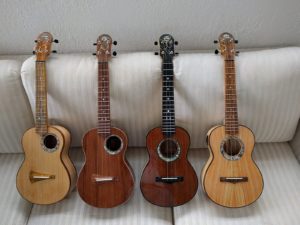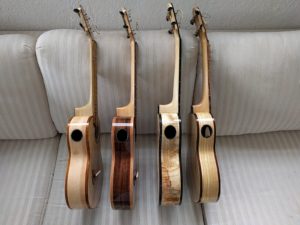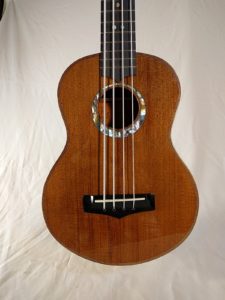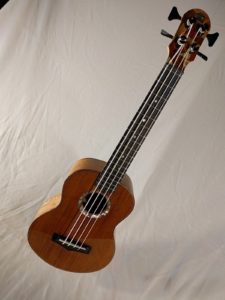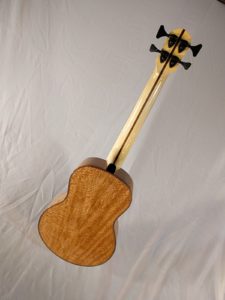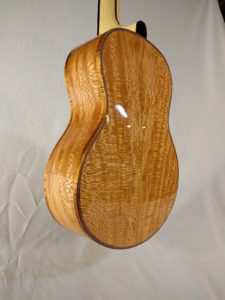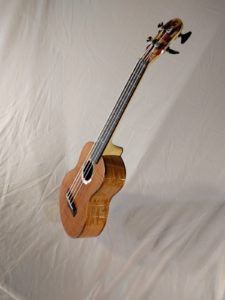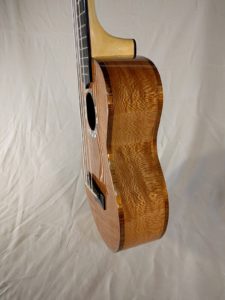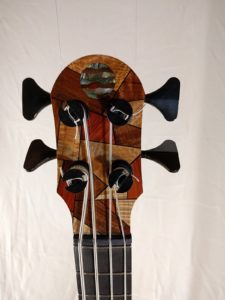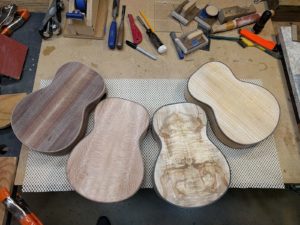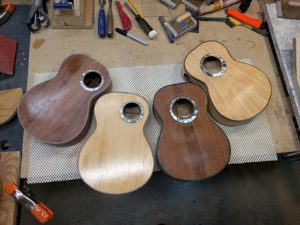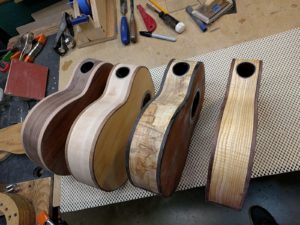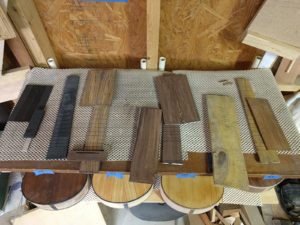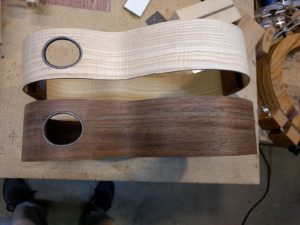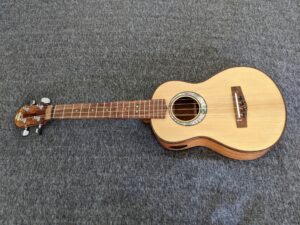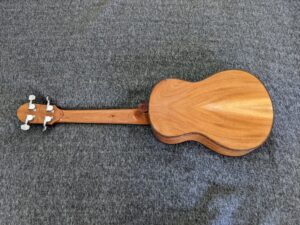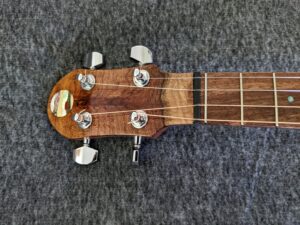The builds are getting to the point where the ‘boxes’ are getting closed up. Before I glue on the backs I shellac the inside of the instrument. Not necessarily traditional, but I started doing it some time ago, and have since found that some luthiers who are much better than me also shellac the inside. From my wood upbringing I was always taught that one must finish both sides of a piece of wood to balance things. For an instrument, a coat of shellac should slow down moisture transpiration, which means that changes in humidity around the instrument will not result in as quick expansion/contraction of the wood, which should increase the stability of the instrument. The inside of the back is also shellaced, all except where it will be glued down.
Once the back is glued on, I sand the sides to get them nice and flat and to make the edges of the top and back flush with the sides. I do this before doing the binding since when the binding channel is cut the router bearing is traveling along the side, so if the side is a little out-of-whack the binding channel will be a little out-of-whack. To sand the sides (and do other operations) I use a bit of a bench-side clamp I made out of some boards, bolts, and knobs. I bring it out and clamp it to the bench when I need it, and otherwise it does not take up bench space. The inside of the ‘jaws’ are cork lined, with one side being just a cork perimeter to allow clamping of the radiused back. Makes work on those pesky curved sides very easy and stable.
